Perched atop the Iberian Peninsula, Barcelona overlooks the glistening Mediterranean Sea as the capital of Catalonia and the second largest city in all of Spain. Originally founded as a Roman settlement in the Middle Ages, the breezy beach-side metropolis boasts a rich cultural heritage that attracts visitors from all over the world. Ancient cobbled streets lined with world-famous cathedrals and architectural wonders from the likes of Antoni Gaudí were once a veritable stomping ground for some of the most influential artists of the twentieth century, including Pablo Picasso, Salvador Dalí, and Joan Miro to name a few. It seems the region offers an overflowing fountain of inspiration to all who gaze upon its sandy shores; from high-end cuisine to haute couture, Barcelona is home to some of the greatest creative minds in the world – and over 20 Michelin stars. A mere stroll through anyone of the unique districts would give you a fascinating view of Catalan heritage, though it would take a lifetime to fully appreciate the long history and thriving culture that have shaped one of Spain’s favorite cities. Here are some ideas to get you started:
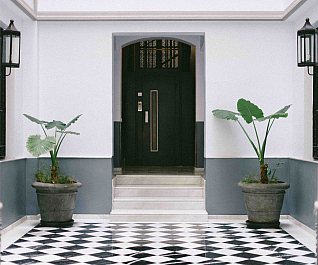 |
StayYour home away from home awaits at The5rooms, an eclectic B&B created by owner Yessica Delgado Fritz in 2004 and conveniently located right downtown. Though it may not be as glamorous as the ever-popular Hotel Omm, the The5rooms offers a “stylish yet warm” alternative to the city’s countless luxury inns, with a far more personal touch. Stay just minutes from Plaza Catalunya, Paseo de Gracia, and Las Ramblas at the original Hotel, where you’ll be offered breakfast on the house (a rare amenity among Barcelona hospitality). Before you set out for the day, feel free to peruse their library of city guides, art books, and multi-lingual novels while you enjoy a drink from their self-serve “Honesty Bar.” If you feel cramped, you can book a room across the street in a gorgeous turn-of-the-century building that holds 12 rooms in addition to the Hotel’s original 5. You can even book one of two apartments, which come equipped with a full kitchen, dining room, sun terrace, and enough space to sleep 4 guests. |
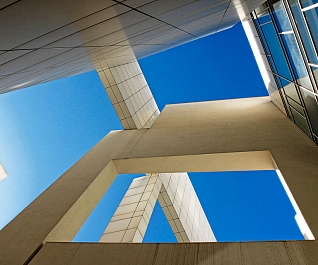 |
ArtThe city’s creative expressions extend far beyond the conventional “art scene:” in fact, it would prove incredibly challenging to identify what’s not art in the Mediterranean metropolis. That being said, you could easily spend an entire trip visiting Barcelona’s museums alone – and this time, we won’t stop you. The Picasso Museum is truly a must-see; more than 4,000 works provide immense insight to the artist’s mind, life, and relationship with the city. Since 1963 the collection has served as an essential reference for art historians and curious travelers alike. |
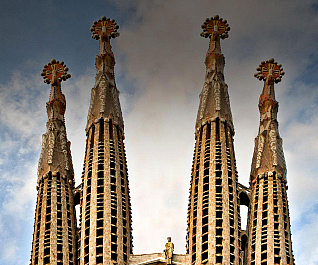 |
Can’t MissYou can’t visit Barcelona without a trip to the Basílica de la Sagrada Familia, a UNESCO World Heritage Site and one of Gaudí’s most famous buildings. Its story goes all the way back to 1866 when construction began, was handed over to Gaudí in 1883, and remained unfinished when he died in 1926. Ravaged by the Spanish Civil War in the 1930s, the building continued to change hands and has yet to be completed; but it’s worthy of recognition even in its current state, despite the scaffolding and sawdust. Elaborate and impressively huge, the iconic structure embodies Antoni Gaudí’s signature style and the spirit of historic Barcelona. |
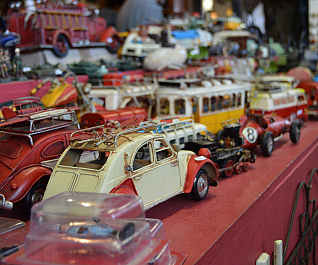 |
ShoppingStay away from the high-end shops and you might avoid being trampled on your way out of the fitting room. La Ribera, once home to Barcelona’s textile district, is now a design hotspot; check out Studiostore, a “concept” shop, artist studio, gallery, and event space that’s bursting at the seams with creative energy. But don’t be afraid to set out on your own and explore the surrounding neighborhood, a fascinating maze of winding streets and miniscule boutiques that carry on a tradition of hand-made clothing, bags, and other accessories. |
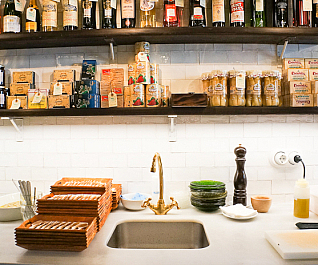 |
FoodLa Boqueria may be crowded, but it’s one of the best food markets in all of Europe. Get there early to avoid the crowds and peruse endless stalls of the freshest produce from all over the world, cheese, eggs, abundant seafood, and the finest meats. Some say the market has been around since 1217, and despite throngs of tourists its still a popular spot among locals today – even some of the area’s greatest restaurateurs do their shopping in behind the massive iron gates on La Rambla. You can easily find a tasty bite at any of the food stalls that line the market, but it’ll cost a lot more than your average food truck hot dog or street-side gyro. |
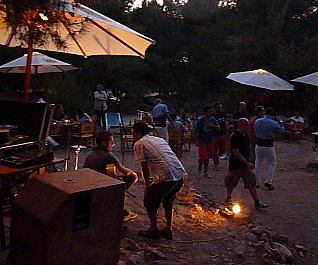 |
PartyLike Berlin, Barcelona’s nightlife usually lasts through the morning as clubbers emerge for around 8 am much needed xurro and a long nap. If that’s your style, you’ll have fun at the legendary Sala Apolo, the center of the city’s indie club scene with good vibes and live folk, rock, pop, and electronic music every day of the week. For more R&B tunes hit up Marula Café, where a vintage air will make vinyl lovers will feel right at home. Dance the night away to groovy jazz, funk, disco, and soul beats in this elegant, minimal space buried in the Gothic Quarter. |





